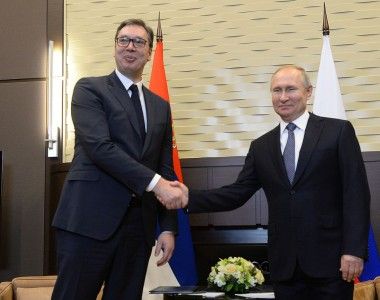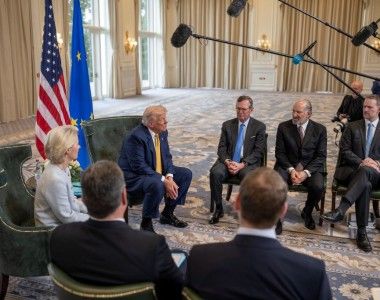Polish Short Range Air Defence: Military and Industrial Challenges [REPORT]
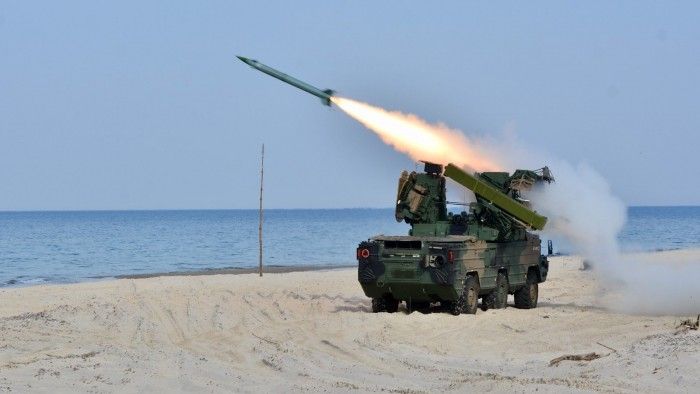
Building a relevant network of VSHORAD/SHORAD systems should be pursued in an integrated manner, but with the use of a broad variety of air defence assets. Land forces’ mobile formations requirements should also be taken into the account here. The modernization of the air defence domain is one of the key undertakings of the Polish Armed Forces. It is also an opportunity for the Polish defense industry, as participants of the webinar “Generational Leap. SHORAD in the Polish Armed Forces” webinar suggested.
During the webinar organized by Defence24.pl, the decision-makers, the experts, and the representatives of the Armed Forces, and of the Defence industry covered a wide range of matters and aspects of the SHORAD modernization process. Chief Editor at Defence24.pl, Jędrzej Graf, stressed the fact that the development of threats and the evolution of the surrounding security landscape force the Polish military to make a generational leap in the air defence domain, especially when it comes to VSHORAD and SHORAD systems. The programs in question shall also be viewed as a major opportunity for the Polish defence industry.
Michał Jach, head of the Parliamentary National Defence Commission noted that National Armament Policy should play a key role here, along with the Armament Agency - a newly born organ. – The complexity of this matter requires a large and strong team of specialists to be involved. [...] The National Armament Policy needs to clearly state that a holistic changes of the defence procurement system and the existing procedures are required to face the challenges in front of the MoD and the Armed Forces, the MP said.
The head of the Commission also hoped that the organ he is in charge of will soon be able to handle bills of law, pertaining to the Armament Agency, also noting that bringing new organs to life is required, considering the fact that SHORAD programmes, Narew included, should be accomplished with a high degree of involvement of the Polish industry, thus creating extra obligations for the Ordering Party (MoD).
Zbigniew Gryglas (Undersecretary of State at the Ministry of State Assets) underlined the significant role that the Narew SHORAD program plays. This refers to both the Armed Forces, as well as for the defence industry. Narew programme is a priority for us, he said. It would become a base, a foundation for protecting the armed forces, the state, and the infrastructure. Not only would that system play a military role, as it also bears an industrial significance, he added. Narew would be a leap for us. We can do this, using domestic enterprises. We have no effector at hand, but we can procure it in a manner that would ensure a complete polonization, he noted.
The PGZ Group companies are ready to implement the Narew program - for instance, through proper investment initiatives, such as the Mesko company project 400. Gryglas also engaged in consultation with the Prime Minister and the Ministry of Finances. He was assured that he would still be able to continue his efforts aimed at supporting the expanding manufacturing capacity of the Polish businesses. Gryglas added that some restructuring would be required here, including efforts aimed at increasing the cost-effectiveness of the operation of the Polish enterprises. Some steps have already been made in that direction.
Major. Gen. Dariusz Łukowski, Head of the Department for the Authority over the Armed Forces at the National Security Bureau assured that BBN is interested in the whole aspect tied to the establishment of national air defences, both when it comes to the critical infrastructure, as well as in case of the Armed Forces themselves. Referring to the question regarding the implementation of the Narew programme he said that “looking for solutions from a scratch would require time and effort, and we are running out of time”, considering the development of threats beyond the eastern border.
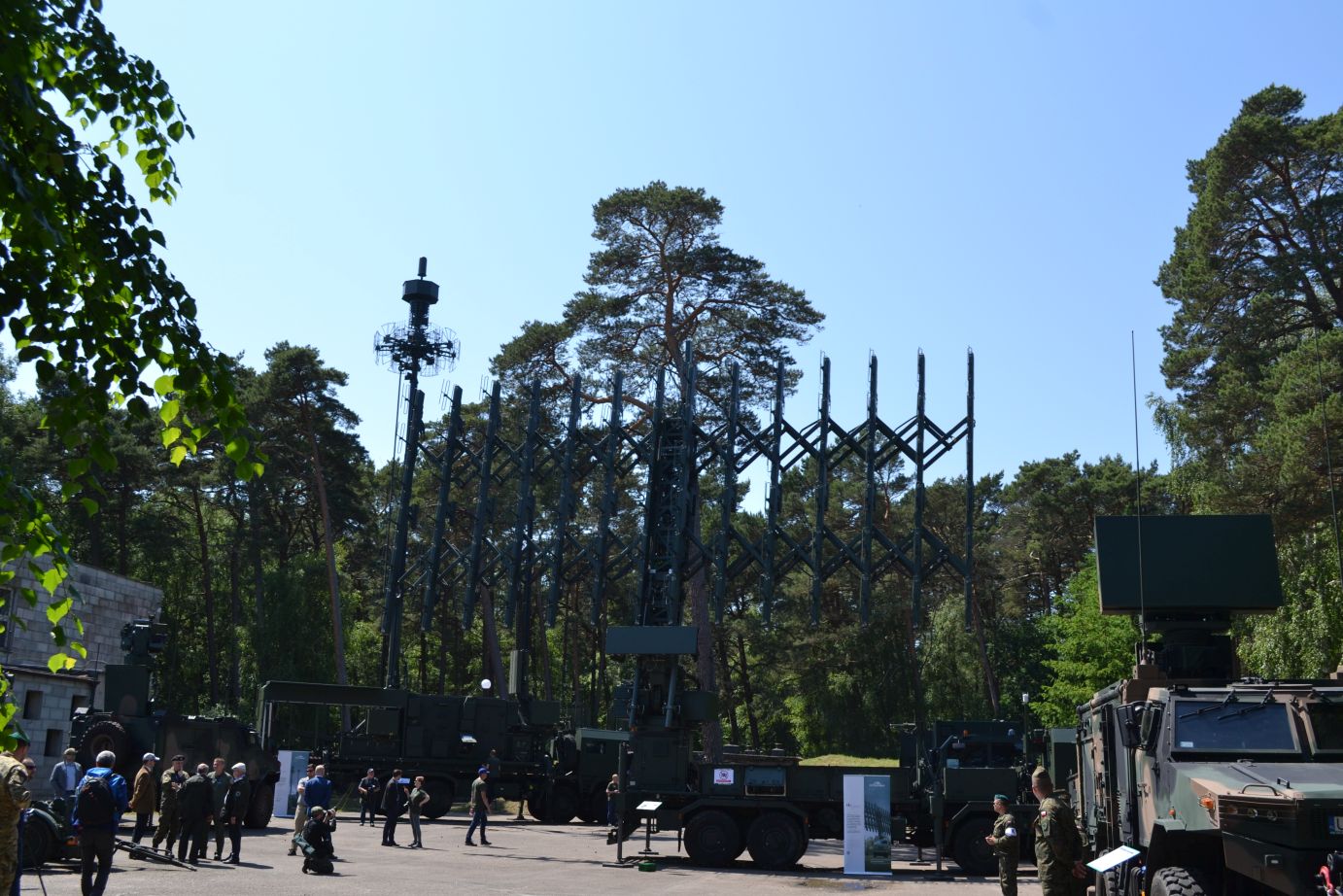
This is why an optimal solution should be found, involving the domestic industry to the maximum possible extent, when it comes to radars and C2 systems. The effector, General said, should be procured externally, within the framework of an industrial cooperation program, so that it is possible to develop it over its lifecycle.
Brig. general Stefan Mordacz, Head of the Department for the Air and Missile Defence – Deputy Inspector for the Armed Service Branches, Polish Armed Forces General Command, noted that Narew would act against a broad spectrum of threats, within the IADS. This takes into account the threat profile referring to the current and future strike assets. Gen. Mordacz also stressed that the air defence system should be integrated and multi-layered.
The General also mentioned the directions in which future R&D project should be realised. Conclusions gathered after the recent conflicts, including the one in Nagorno Karabakh, as well as the conflict in Ukraine, have shown that C-RAM capabilities would also be needed. Further development of radars and C2 systems is required to effectively detect threats with decreasingly lower RCS and in order to make engagement decisions quicker.
Brig. general Kazimierz Dyński, Commander of the 3rd “Warszawska” Air Defence Missile Brigade stressed the fact that the unit subordinated to him has already benefited from some modernization programmes - Wisła, Pilica. It also benefits from the upcoming SHORAD procurements, such as Narew. “We are able to note the changes in the elements of the air/missile defense elements”, he added. He noted that the establishment of an air/missile defence system is among several priorities adopted for the National Defence Security Strategy that was developed in July 2020. The Polish Armed Forces execute the related tasks through “implementation of the technical modernization programmes”.
Polish Industrial Capabilities
Dariusz Gwizdała, Member of the Board at the PGZ Group, stressed the fact that the whole state, not only the military, Polish Ministry of Defence, or the industry, should get involved in the process of establishing the air/missile defence system - a task defined as a priority by the National Defence Strategy. Within the aforesaid context, Gwizdała emphasized the role that Narew plays, stating that it is a comprehensive programme that would take decades and that has a price defined in billions, yet it would make it possible to establish broad competencies. He noted that the program involves the manufacturing of 114 missile launchers and almost 90 radars and other specialist equipment of a broad array of types.
Gwizdała said: “we want Narew to have a Polish C2 solution, and we are ready for that”. The Polish command system in Narew is to be completely compatible with other C2 solutions operated by the land forces - “Rosomak BMS and “Wierzba”. When it comes to the effector, there is still a necessity to procure one, and to polonize it, so that the domestic industry is able to deliver a complete system.
President of the Management Board of the Mesko S.A., Tomasz Stawiński, recalled the fact that recently, a large quantity of Piorun MANPADS has been delivered. The above means that the manufacturing processes have been stabilized, thus the entity is ready to implement further projects. Stawiński added that R&D and transfer of technology should be viewed as indivisible. He declared that Mesko S.A. would be able to develop a missile with performance parameters somewhere between the Piorun missile, and the missiles expected to be used in the Narew system (with a range of around 12 kilometers).
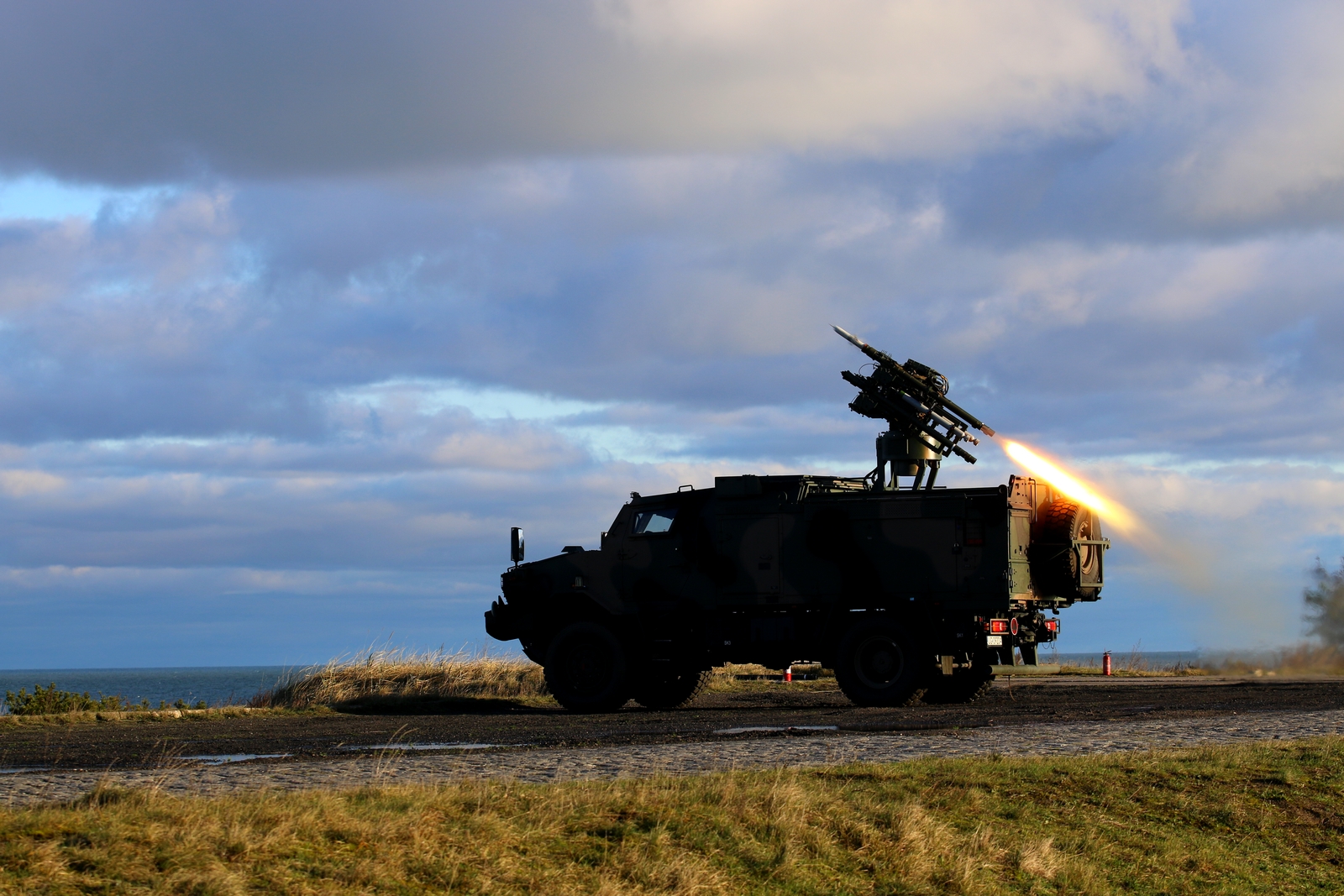
Stawiński said that implementation of relevant know-how would be required in the case of the Narew program. Even though the implementation timeline may differ, depending on the technology, the manufacturing of missiles shall be taking place in Poland in its entirety. The transfer of technology should also include the R&D so that each of the weapons systems can be developed during its lifecycle.
Janusz Noga, President of the Management Board at the CRW Telesystem-Mesko said that the Piorun programme allowed the industry to acquire a broad range of competencies tied to IR guidance systems. The undertaken efforts made it possible to extend the range and to make the sensors resilient to jamming. Furthermore, the capability to detect small form-factor targets has been prepared. All of the above made it possible to create missiles with a range of 12+ kilometers. Whereas, initial guidance would be provided by a different system - a beam riding solution, or INS.
Noga also referred to the US procurement programme aimed at the acquisition of new generation MANPADS systems, stating that we are experiencing a renaissance in the domain of these products. He noted that there is a scarcity of suppliers of systems as such on the global market, stressing the value and relevance of the Polish know-how within that scope.
International Industrial Partners
USAF Brig. General ret. Kenneth Todorov, Vice President, Northrop Grumman Missile Defense Solutions noted that the Wisła system, thanks to the IBCS C2, will be easily tailorable to the evolving battlespace. In the case of the Narew system, it would be most efficient to connect it directly to Wisła via IBCS, allowing both to form a layered, fully integrated and net-centric air defence solution. And the F-35A fighters would become a part of a system as such as well.
Todorov noted that should a decision be made to select IBCS for Narew, the approach would differ from that adopted for the Wisła programme. Most of the work would be performed in Poland, by the domestic industry. The above refers to effectors, sensors, and communications as well. Polish Transbit R-460A radio relay has already been integrated with IBCS. The mentioned integration has demonstrated the IBCS’s capabilities, and the operation of the modular open systems architecture, Todorov said.
Vidar Skjelstad, Vice-President, Konsgsberg Defence and Aerospace, also highlighted the level of the NASAMS’s system readiness. As NASAMS is being manufactured continuously, Poland could receive the first system in 26 months, from the date when the order is placed - as per the usual, standard schedule of deliveries, Skjelstad said. The system offered by Kongsberg could potentially utilize the missiles used by the F-16s and the F-35s (AIM-120 AMRAAM, AIM-9X Sidewinder). It could also be used to protect the airbases where the aircraft are deployed.
The NASAMS system is being continuously developed, in line with its original concept. Fifth-generation of the combat management system is being introduced now. New sensors and effectors of greater range are also integrated. Skjelstad stressed the fact that Poland currently already has some elements of the NASAMS battle management system at its disposal, within its Coastal Defence Squadron (now a Naval Missile Unit) element. The fruitful industrial cooperation launched within the framework of the Coastal Missile Squadron programme can be extended and continued in the Narew programme. A similar modus operandi for industrial cooperation has been recently adopted in Australia.
James Price, Vice President Export Europe at MBDA noted that if CAMM is selected as the effector for Narew, then we would certainly be dealing with a Polish system guaranteeing sovereignty in use and development. He stressed that MBDA offers a comprehensive transfer of technology - when it comes to both the CAMM missile, as well as the launcher - along with the know-how related to the operation of the system, including the expertise referring to the seeker, design, and other components. Price said that the technology transfer would allow the Polish industry to obtain an ability to develop future variants of the CAMM effector.
This broad technology transfer declaration, supported by the British government, is founded upon the Polish-British defence cooperation treaty signed back in 2017. Price recalled the fact that CAMM has already been fielded by the British Army, and it is used, operationally, by the Royal Navy. Meanwhile, according to James Price, CAMM-ER would meet the requirements of the Italian land forces and air force. The missiles may thus be used both in the Narew system and in potential naval applications.
Ronen Leibovich, Rafael’s Business Development & Marketing Director Long Range Air & Missile Defense Systems Directorate outlined the Israeli offerings in the Narew and SONA programmes. When it comes to the former, Rafael came up with two solutions to meet the Poland's needs. The first one comes in a form of a complete Spyder system armed with I-Derby, I-Derby-ER, and Python 5 missiles, in a version selected by the Polish user. As a second, additional option, the Polish industry could also receive the know-how required to manufacture the I-Derby ER missile in collaboration with Rafael. The effector would also be integrated with the domestic C2 system.
In the case of the SONA program, Rafael is offering the Iron Dome system in an “all in one” variant - with the launcher, fire control system, sensors (including the multi-functional radar) based on a single vehicle, thus providing an ability to protect mobile elements of the land forces. Rafael’s representative stressed the assumption adopted by the company: it is willing to work with the Polish industry, taking into the account many years of experience gathered during the Spike programme.
VSHORAD and Counter-UAS
Even though most of the discussed matters revolved around the Narew programme, matters related to VSHORAD and counter-UAS capabilities were also mentioned. Col. Jacek Gajda, Head of the Air Defence Department at the Operational Command of the Armed Forces emphasized the relevance that acquisition of counter-UAS capability has. Especially when it comes to mini- and micro-UAVs. The Command, along with the Internal Security Agency [ABW], Military Counterintelligence Service [SKW], State Protection Service [SOP], the Police, and the Military Police, have all organized a practical test programme that puts the available solutions to the test.
Up until now two editions of test events took place, during which products offered by five businesses were verified. The tests are a great opportunity to confront the actual solutions, with the requirements of the military and other services responsible for the national security. Conclusions can be drawn, while the manufacturers may modify the presented systems as well. Currently, the third phase of tests is being prepared - it is scheduled to take place at the Air Force’s Central Range in Ustka between 26th and 30th April this year. There, system kinetic effectors would also be tested.
Col. Krzysztof M. Gaj, PhD noted that there is a necessity to tailor the organizational structure of the air defence elements in the land forces, as these, currently, are modeled after the ones of the Warsaw Pact. He emphasized that solutions adopted by the US and the UK towards the end of the Cold War, and in the early 1990s, may serve as a good model to begin with - before deep cuts in US and UK force structure were implemented.
What’s next?
The conference attendants all stressed the fact that ground air defence assets need to keep up with the dynamic development of threats, thus it should be continuously developed. The air defence programs include several key elements. Integration of the individual IADS layers is also important. Finally, cost-effectiveness should also be accounted for, by selecting discriminate assets that could act against specific threats. Establishing an air defence system would also create an opportunity for the domestic industry. The industry’s expertise should be expanded, both thanks to proprietary R&D programs, as well as the external technology transfers.


